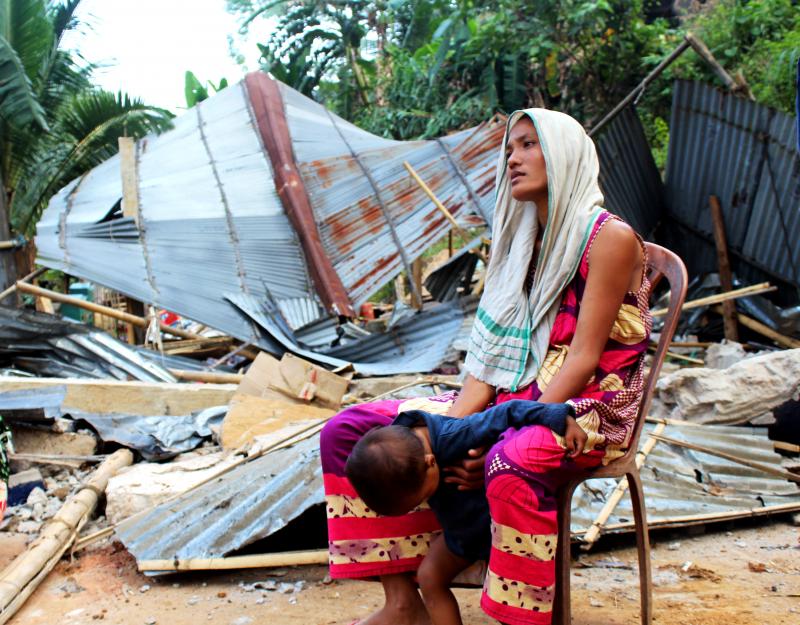An estimated 32.67 per cent of Assam’s population live in multidimensional poverty and face deprivation from adequate health and nutrition, education, and standard of living. The National Multidimensional Poverty Index, Baseline Report,2021 published by the NITI Aayog has revealed this.
With nearly one third of the population in the state being multidimensionally poor, the national index has placed Assam at the fifth rank with Bihar on the top of the list with the highest 51.91 per cent of its population living in multidimensional poverty. Assam shares this rank with Meghalaya. Apart from Bihar, Madhya Pradesh (36.65 per cent) Uttar Pradesh (37.79 per cent), Jharkhand (42.16 per cent) are the three states with higher percentage of population living in multidimensional poverty.
The index has placed Kerala at the bottom of the list of all states as it has the lowest percentage of 0.71 (less than one per cent) of the state’s total population living in multidimensional poverty with Goa figuring above it with 3.76 per cent.

Photo- nezine.com
The Report also states that 39.67 per cent population of Assam is nutrition deprived, 25.44 per cent population is maternal health deprived, 2.90 per cent child and adolescent mortality (NFHS-5, provisional Report), 4.4 per cent children is school deprived, 16.19 per cent deprived of Years of schooling, 31.50 per cent is sanitation deprived (NFHS-5, provisional Report), 60.50 per cent is deprived of cooking fuel ((NFHS-5, provisional Report), 14.90 per cent is deprived of drinking water (NFHS-5, provisional Report), 7.4 per cent is electricity deprived (NFHS-5, provisional Report), 69.30 is housing deprived (NFHS-5, provisional Report), 19.95 per cent is deprived of assets and 3.70 per cent is deprived of bank account.
With 51.07 per cent Hailakandi is the worst performer district of Assam in the district-wise list of multidimensional poverty index, followed by Dhubri with 51.06.per cent, Karimganj with 46.02 per cent,Cachar with 42.07 per cent, and Goalpara with 40.15 per cent.
Other districts with high percentage of multidimensional poverty index that the state average include Barpeta with 39.41 per cent, Darrang with 38.22 per cent, Karbi Anglong with 37.73 per cent , Marigaon with 36.75 per cent, Tinsukia with 36.70 per cent, Chirang with 36.2o per cent, BAngaigaon with 33. 80 per cent.
With 11.04 percent living in multidimensional poverty, Kamrup metropolitan districts ranks first in district-wise list. This is followed by Nalbari with 16.94 per cent, Jorhat with 20.24 per cent, Golaghat with 20.60 per cent and Baksa with 23. 59 per cent living in multidimensional poverty.
“ India’s national MPI measure uses the globally accepted and robust methodology developed by the Oxford Poverty and Human Development Initiative (OPHI) and the United Nations Development Programme (UNDP), who have been key partners in ensuring the public policy utility and technical rigour of the Index.
Importantly, as a measure of multidimensional poverty, it captures multiple and simultaneous deprivation faced by households. This report presents an in-depth analysis of the headcount ratio and intensity of multidimensional poverty at the national, State/UT, and district levels. I am certain that the results and findings of this baseline edition of the index will be of great relevance and interest to policy makers and administrators in States and districts, researchers and scholars, and the wider public” states Dr. Rajiv Kumar Vice Chairperson National Institution for Transforming India.
“This baseline report of India’s first ever national MPI measure is based on the reference period of 2015-16 of the National Family Health Survey (NFHS). The national MPI measure has been constructed by utilising twelve key components which cover areas such as health and nutrition, education and standard of living”, He further states.
This is part of a global approach of United Nations Development Programme and Oxford Poverty and Human Development Initiative, who spearheaded releasing of Global Multidimensional Poverty Index 2021, during October.
“To end poverty in all its forms everywhere is at the core of the comprehensive, expansive, and interdependent framework of the 2030 Agenda for Sustainable Development adopted by the world in 2015. The Multidimensional Poverty Index (MPI) is a systematic, robust, and nuanced measure to estimate our progress towards achieving this goal. MPI as a measure was first developed by Oxford Poverty and Human Development Initiative (OPHI) and United Nations Development Programme(UNDP) for inclusion in UNDP’s flagship Human Development Report in 2010, where it has been since published”, as stated in the Report by Shoko Noda, Resident Representative United Nations Development Programme, India.
She adds, “India’s National MPI: Baseline Report & Dashboard is a milestone in its journey towards realising the SDGs, in particular–target 1.2 of the 2030 Agenda which specifically focuses on addressing poverty in all its dimensions. The national MPI is being launched at an important juncture where I am sure it will provide key insights into the development scenario at the national, State and district levels, especially for India’s sustainable recovery from the COVID-19 pandemic.
The Global Multidimensional Poverty Index 2021 states that 1.3 billion people are multidimensionally poor across the world. About half of them are (644 million) are children under age 18. It also states that nearly 85 percent of them live in Sub-Saharan Africa (556 million) or South Asia (532 million) and more than 67% live in middle-income countries.
Source:
https://www.niti.gov.in/sites/default/files/2021-11/National_MPI_India-11242021.pdf